Landscaping with sand: 10 ways to add a coastal vibe to your backyard
Try landscaping with sand to give your outdoor space a laidback look that's both pretty and practical


Landscaping with sand maybe isn't the first thing that springs to mind when you're thinking of ideas for a backyard makeover, but you'll be amazed by how many creative ways you can use it to add a lighter look than you get with many other landscaping materials.
Sand can be sprinkled or spread, layered or tiered, and also makes the perfect planting medium for a range of shrubs, succulents and flowers that all love the light and free draining growing environment it offers. It's also worth mentioning that it's a very budget-friendly material for your landscaping ideas too.
It's great fit for dry gardens and Mediterranean gardens, as well as sustainable gardens, cactus gardens and coastal plots too. So why not change up the look of your backyard with this practical and easy-to-use material.
10 ways to update your space by landscaping with sand
Try landscaping with sand for a quick garden makeover that takes just a couple of hours but looks really professional, or use it as part of a much bigger landscaping project, especially if you live in a mild climate.
If you want inspiration for your front yard landscaping, think about using sand there too, particularly if you want to go for a modern look.
1. Surround coastal plants with sand for a seaside vibe

If you're landscaping with boulders or pebbles, sand works well in the mix to create a coastal-inspired design that showcases plants that thrive by the sea.
This coastal garden design by Kate Gould and Alan Titchmarsh features sand, pebbles, mossy rocks and boulders. The planting scheme includes succulents like aeonium and echeveria, as well as the white-flowered spires of towering Echium pininana and the delicate pink petals of Geranium palmatum.
Plants like these thrive in sandy soils and a mild climate such as you find by the sea. There's lots of scope when it comes to choosing the best coastal plants for your garden too. Adapted to thrive in challenging conditions, all they need is well-draining sandy soil and a sunny spot to flourish. Then you just leave them to get on with it.
2. Work up a desert-inspired space
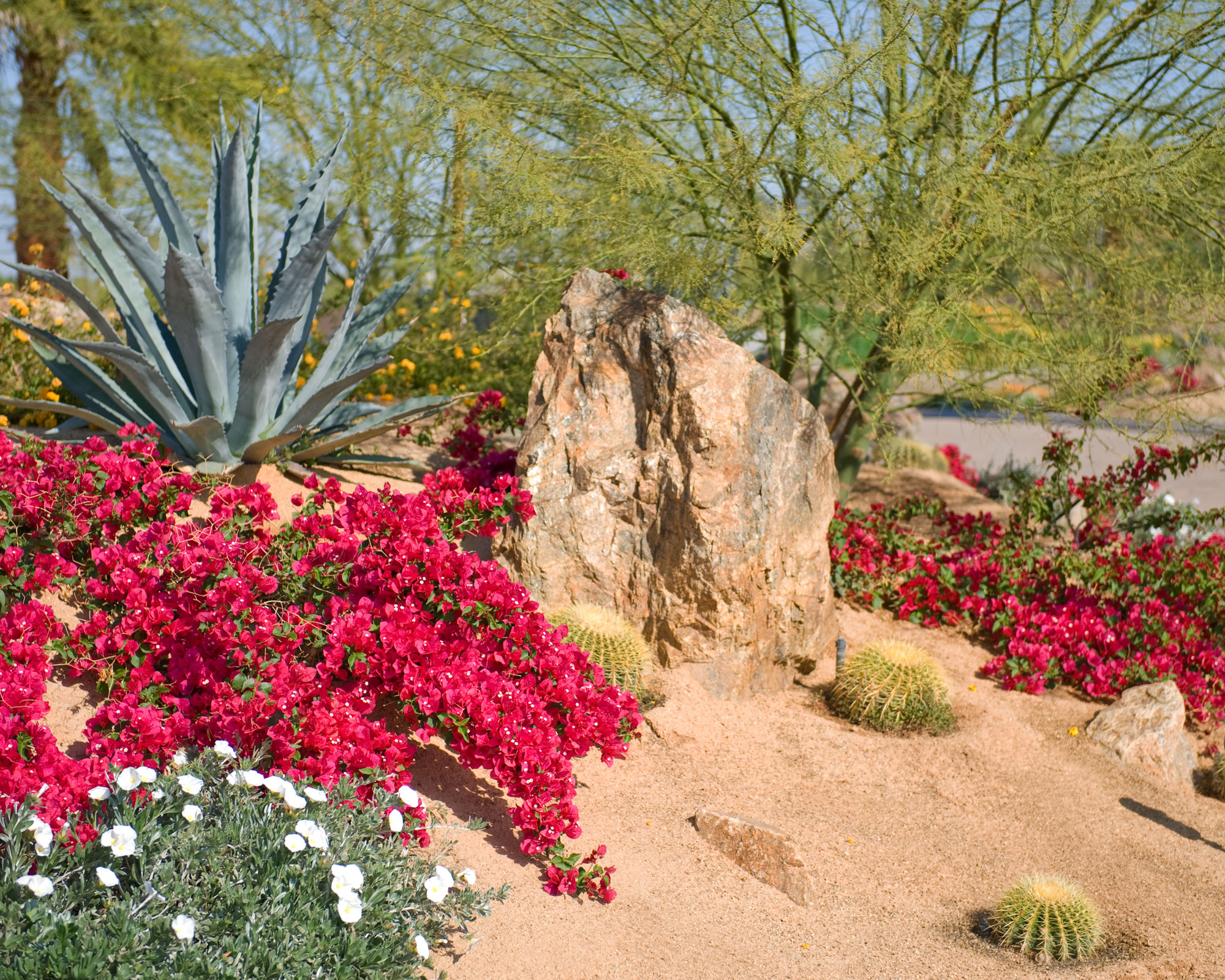
Using sand in your landscaping is a very sustainable way of gardening as well as being the natural choice if you live in a mild or coastal climate. You don't need to heap chemical fertilizers on the plants and watering is minimal so it ticks the eco box. Desert-style planting is often the most practical design for seaside gardens too.
The red desert rose is a real eye catcher that looks stunning against a sandy backdrop and is one of the best drought tolerant plants. In many tropical and warmer climates (USDA zones 11 and12) it's grown outdoors as an ornamental plant year round, while in cooler zones it tends to be cultivated as a houseplant.
Spiky aloe vera and other cacti and succulents will thrive in sand too. If you don't live in a warm climate you can still get the look by planting them in containers set in sand for the summer, then bringing them inside when the weather gets cooler.
3. Use white sand for a clean and contemporary look
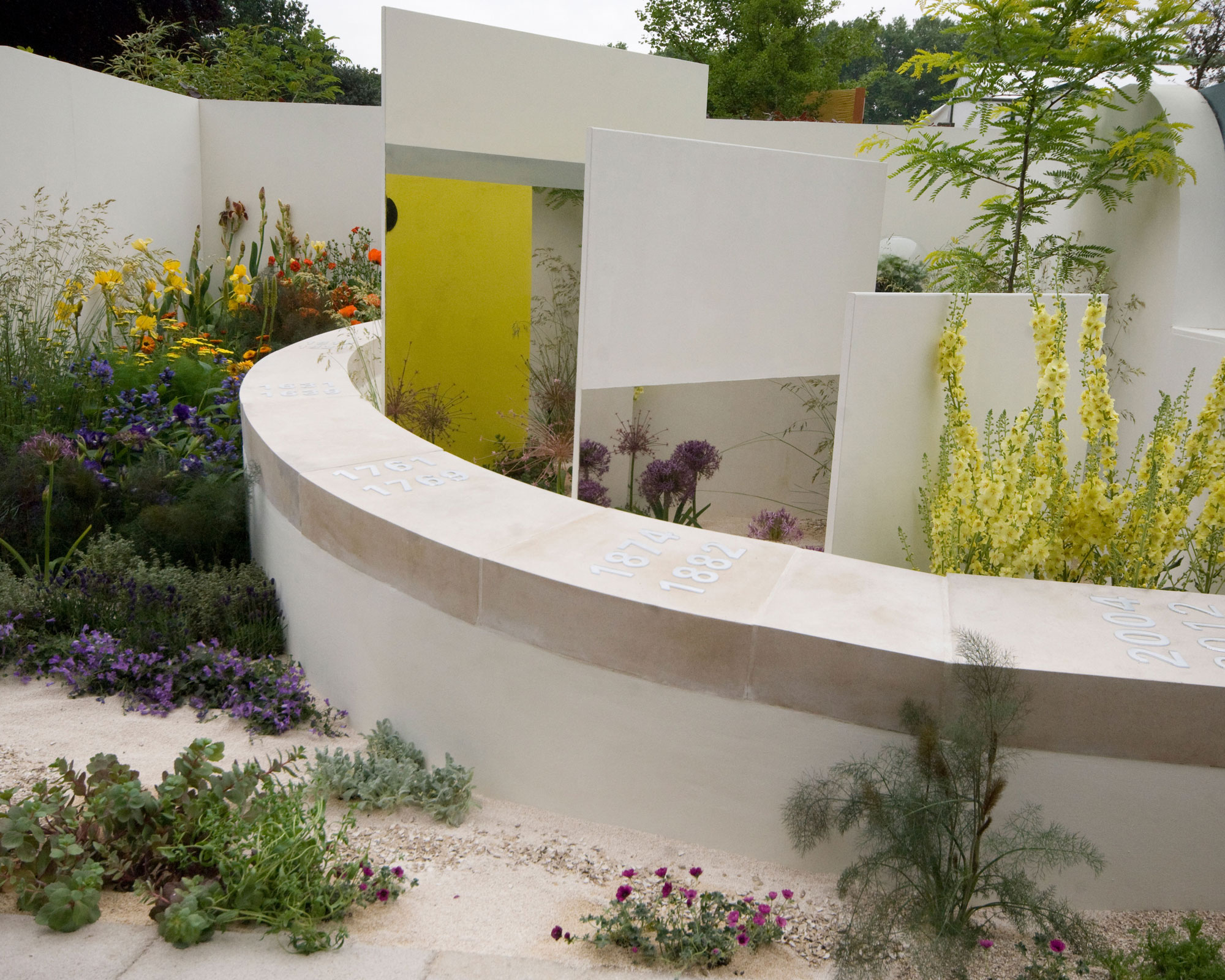
If you like modern garden ideas think about including smoothly rendered white hardscaping with crisp white sand into your design. With a few key planting ideas added to the mix, these elements will combine to create a contemporary look that's big on style and perfect for low maintenance landscaping too.
Keep things minimal by choosing just one or two colors for the planting such as the purple and orange used here. This will be big on impact and really pop against the bold shapes of the white walls. Choose plants that will happily settle their roots into sandy soil such as low-growing purple periwinkle and silvery Helichrysum, which are some of the best edging plants you'll find.
4. Include a sandy play area in your landscaping

Let's face it, most sand pits are an unwelcome intrusion to your garden design but this courtyard in central London by Laara Copley-Smith reveals a novel way of approaching the dilemma thanks to the innovative decking idea.
The smooth cedar wood decking features an inbuilt children's play sand pit which comes with a matching cedar wood top that slots in to close it off when the space needs to be switched up for entertaining in the evening.
It's a simple idea if you're looking for ways to design a child friendly garden. It's been executed really well and shows how landscaping with sand can work successfully for all the family, creating a space that is suitable for children and grown-ups alike.
We love the Acer palmatum that sits in a bed of white pebbles, the stems pruned to show off the sculptural qualities of the tree. It's a great idea for landscaping around trees, plus the tree throws dappled shade onto the sand pit to offer protection on hot days.
5. Use sand as part of an eco landscaping project
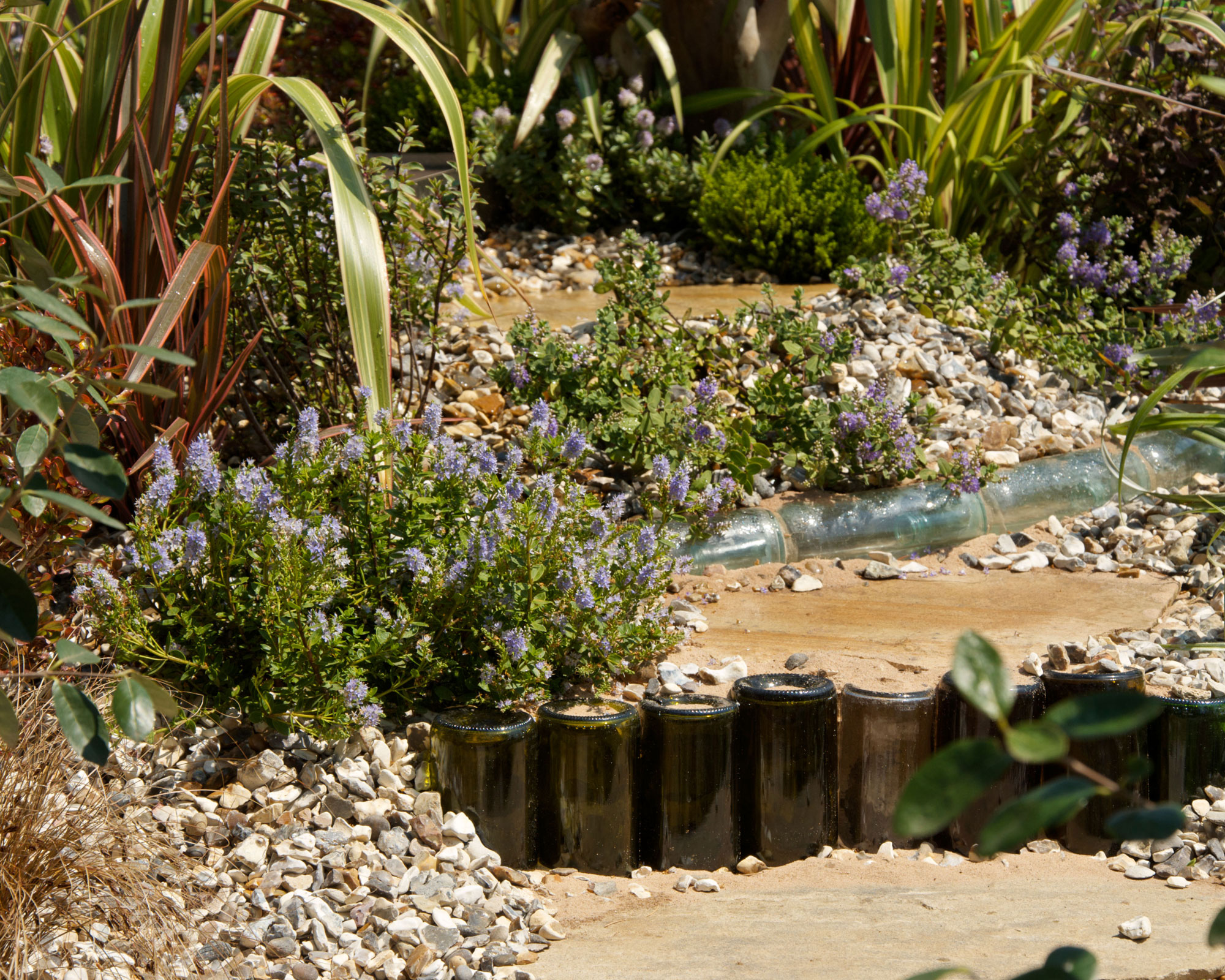
When we design a sustainable garden, we help to preserve natural resources and take some of the pressure off the natural environment. With that in mind, sand has many practical uses for landscaping aside from simply being a decorative feature. Added to the ground in the correct proportion it can help rainwater and natural organisms to penetrate the soil beneath, improving your garden drainage in the process.
At a time when natural resources are becoming more and more stretched, water-saving methods are essential in good sustainable gardening. This innovative garden irrigation design waters plants through upended glass bottles that are used to line channels. It also shows how sand can be a really innovative material for your garden edging too.
Designed by creative New Zealand landscaper Bayley LuuTomes, it includes an outdoor shower (not seen) that feeds the bottle irrigation system, reinforcing the design's strong eco slant.
Planting from Bayley's native New Zealand such as Phormium adds a sculptural quality to the design, while soft pockets of flowering blue thyme are tucked into the sand and gravel landscaping tiers to help blur the lines for a natural unstructured look.
6. Include a meandering sandy path

Sandy garden path ideas introduce a relaxed element, are easy to walk on and well worth the fairly minimal effort of adding one to your landscaping. Japanese gardens use sand to represent water, so make your path a meandering trail, like a small stream running between the shrubs and flowers. It's also one of the best cheap landscaping ideas to consider if you're on a budget.
Dry soil-loving shrubs, succulents and lots of different types of ornamental grasses are a natural fit to edge a sandy path. Bright yellow desert marigolds add pops of brilliant color for contrast for those of you living in a warm climate.
The enormous popularity of cactus gardens extends far beyond their native habitat, with devotees in the eastern United States, Europe and Japan, and hundreds of specialty nurseries feeding the demand.
7. Use the design elements of a seaside garden

This relaxing garden features pretty flowers among the sand pockets, tufts of grasses and reclaimed driftwood that combine to create a design that's packed with seashore style inspiration. Dichromena colorata (star grass) is the star of the show with its delicate grassy foliage supporting starry white flowers.
To get a look like this choose ornamental grasses, such as the dune grass Ammophila arenaria, Stipa tenuissima or Stipa gigantea. Add lots of plants for rockeries that like to grow in cracks and crevices, such as Silene uniflora, sea campion and sea thrift, if you fancy adding splashes of color.
8. Make a beautiful cactus garden

If you live in a mild climate, try landscaping with cactus and sand in your yard. A desert-inspired cactus landscape with sand and crushed stone can be put together relatively easily. Spiky agaves and crown of thorn plants introduce sculptural shapes to the design and artfully arranged rocks complete the 'desert' look.
Alternatively, try scattering cacti among your existing flowering perennials or small shrubs to introduce a striking look with a different feel. Taller varieties of columnar cacti will also look stunning silhouetted against a wall or used as specimen plants.
9. Soften a geometric garden design with sand
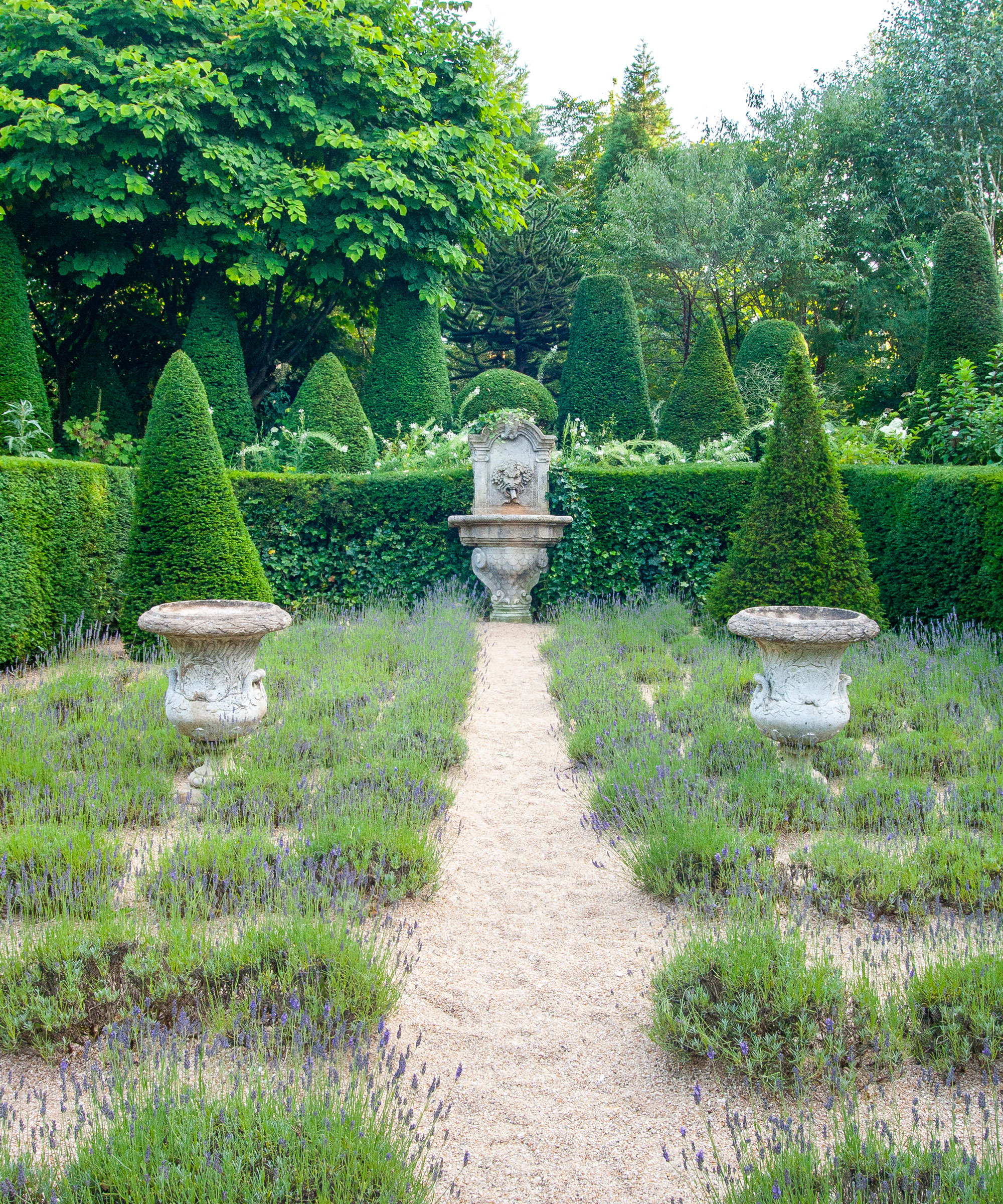
Edging garden paths with airy borders of lavender is a popular hack that garden designers love. Why not try this look with sand instead of gravel or paving stones for a much softer look. Add sand to paths when landscaping with lavender and you will be transported straight to a Mediterranean garden.
This garden in Normandy, France, uses river sand for landscaping the many paths. It introduces a more relaxed feel to the geometric layout and contrasts perfectly with the hard lines of the topiary planting too.
As the name suggests, river sand is normally collected from the beds and banks of rivers. It has a smooth, rounded and fine quality, which results in a pleasing look when landscaping with sand. Why not add to the overall look by trying some of our suggestions for landscaping with river rocks too?
10. Surround oversized planters with sand
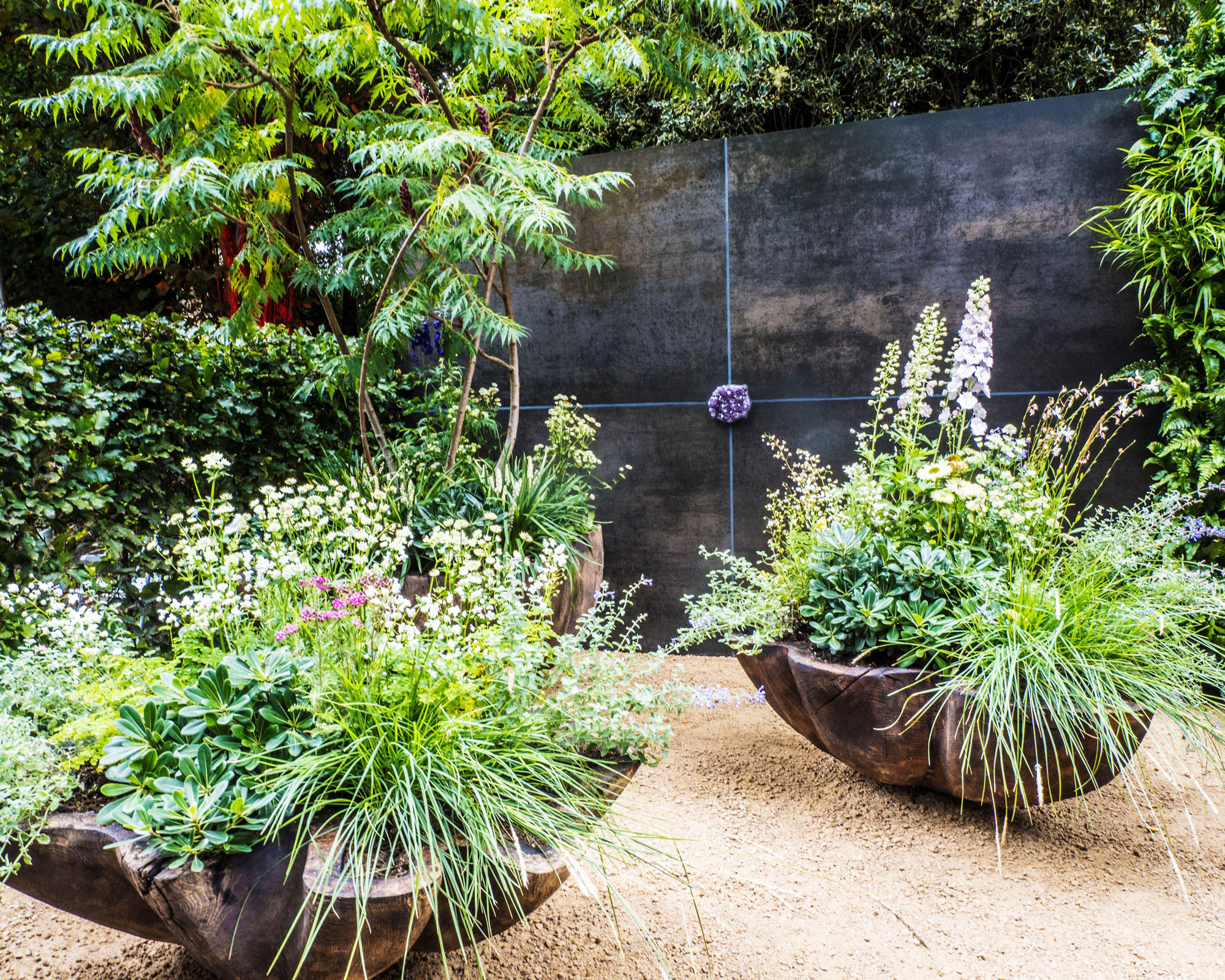
Introducing just a small amount of sand can really lighten the look of your plot. Try including a section of sand inset into an area of the patio or as a feature of flowerbeds. Then add richly planted container gardening ideas featuring grasses and mixed flowering perennials. It's one of the easiest ways to try the landscaping with sand trend without a lot of hard work.
What type of sand is best for landscaping?
The best type of sand for landscaping varies according to what project you have in mind. The color of the other materials being used in the landscaping project is important too, as is the color of the sand itself as there's quite a choice available.
The best sand for landscaping is generally considered to be white sand, which has a unique bright texture, which makes it popular. White sand has little to no color inconsistency which means you end up with a uniform look too.
White sand particles are also fine and a consistent size, which means it can be relatively comfortable to walk on and work with. This is in contrast to other sand types where the size and the texture may have a lot of variation, making it more difficult to landscape with.
White sand can be used for a variety of projects as compared to other sand types. White sand is also used for sandboxes as its fine texture is ideal for play areas.
Here are the other main types of sand you might want to know about too:
- Mason sand should be used for pavers, patios, pools and mixing with mortar and concrete for laying stone and bricks. This type of sand is the perfect foundation for landscaping projects.
- Concrete sand is is used as a leveling medium or a base layer for raised patios, ground pools and walkways. It's a mix of cement and sand.
- Horticultural sand is very gritty, made from crushed granite, quartz or sandstone. It's also known as sharp sand, coarse sand, or quartz sand. When used for plants or in garden planters, sand consists of both large and small particles.
- Lawn sand is a mixture of sulphate of ammonia, sulphate of iron and fine sand. It's spread on the lawn as a method for how to get rid of lawn moss and to give the lawn a boost, as sulphate of ammonia is a high-nitrogen fertilizer your lawn will love. It's of no use elsewhere in the garden. If you add it to clay soil to improve drainage, for example, it will overload your plants and vegetables with nitrogen, giving you too much leaf and too few flowers.

Is sand good around plants?
There are lots of plants and flowers that thrive in extremely sandy soil. Sand creates pockets of air, increasing aeration, drainage and generally loosening up the soil. This is especially helpful for plants with fine roots.
If you're looking for ways of landscaping with evergreens or landscaping with flowers, be sure to factor in what works with sand too. Here are some of our favorite sand lovers which includes a mix of shrubs, climbers and perennials to choose from.
- Bamboo
- Buddleia
- Daphne
- Euphorbia
- Geranium
- Hebe
- Honeysuckle
- Hydrangea
- Kniphofia (red hot poker)
- Lavender
- Rosemary
- Sage
- Salvia
- Santolina
- Sedum
- Thyme
- Wisteria
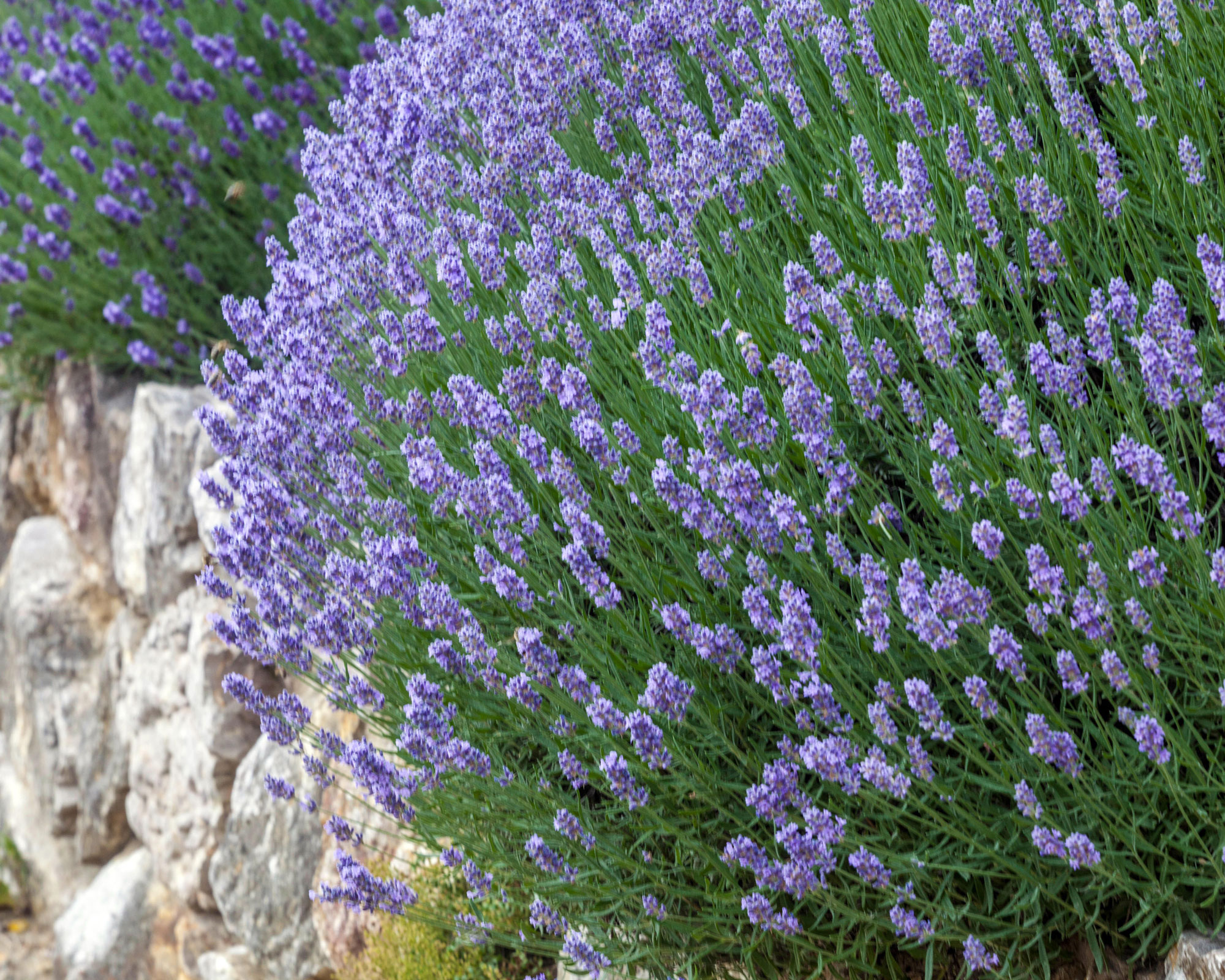

Lifestyle journalist Sarah Wilson has been writing about gardens since 2015. She's written for Gardeningetc.com, Livingetc, Homes & Gardens, Easy Gardens and Modern Gardens magazines. Having studied introductory garden and landscape design, she is currently putting the skills learned to good use in her own space where the dream is establishing a cutting garden.
